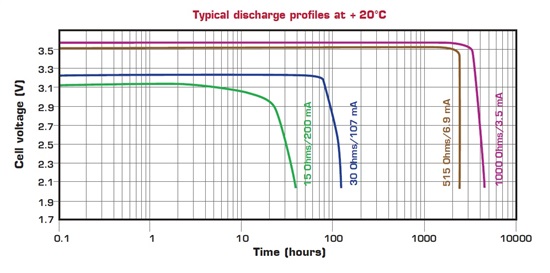Hello,
I am new at battery technologies and I need some guidance. I will try to explain my problem.
I am designing a battery powered device. I will use Non-Rechargeable battery such as 19000mAh 3.6V Primary lithium battery in my design. I use TI MSP430F247 microcontroller which has 12-bit SAR ADC.
I have to measure battery before starting to drive some equipment such as GSM Module in my circuit. Because if the battery capacity is not enough for driving the modules I should not start the modules and I should start the special process. But my problem is that I cannot understand battery capacity by measuring voltage of the battery using MSP430F247's ADC. Because the battery voltage level is always the same until the battery is exhausted. You can see this state on the following diagram which is the battery discharge profile.
So my questions are;
1) What is the best measurement method of Non-Rechargeable Primary lithium batteries?
2) I need cheap method so Can I measure the battery cappacity just using MSP430F247's ADC. If I have to use a Gas Gauge IC Which should I use IC for Non-Rechargeable Primary lithium batteries?
Best Regards,
Mehmet Cihangir


